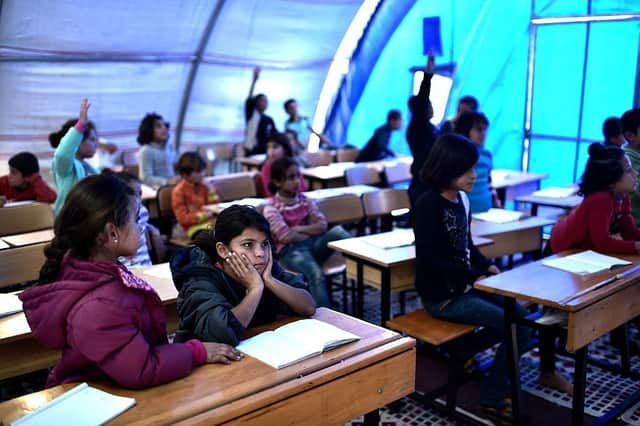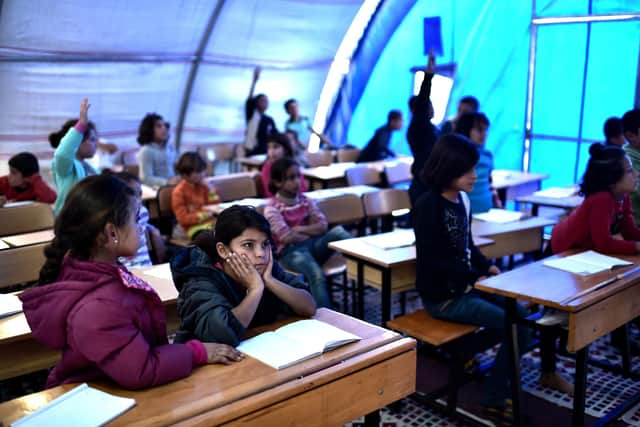Teaching refugee children in their own schools ‘gives them hope that they will return to their country’


After six years, however, the Turkish government closed the Syrian schools and ruled refugee children should be taught in mainstream centres, as the war was deemed to have gone on too long.
Iman Sharif, an associate tutor at the University of Glasgow - who tackled the subject in her PhD thesis, Pedagogy in an Urban Syrian Refugee School in Turkey - has spoken of the pros and cons of teaching refugee children in their community groups, rather than integrating them into the host country’s school system.
Advertisement
Hide AdAdvertisement
Hide AdShe said: “Syrian refugee families preferred to send their children to Syrian school. A high percentage of students [in Turkey] were attending these schools, which really emphasises how valuable they were for the families. They were oversubscribed.


"There were practical things which made it very easy for the families to choose these schools. First of all, it is practical to use familiar language and a familiar curriculum when you’re teaching children in this situation. It also gave them hope that they are coming back to their country. These schools gave both the parents and children hope that they are coming back, and maybe soon, and that's why they wanted to stay in touch with their country through the language. It really motivated them to continue their education and prevent a loss of learning.
"There is a language barrier when it comes to attending school in a different country, especially for parents, so by going to a Syrian school and using familiar language and familiar textbooks which provide a sense of normalcy and security, parents found it easier to support their children’s learning. It allowed for communication between the children, parents and staff for discussing any kind of issues they have.
“In the Ukrainian situation, by creating schools run by Ukrainian teachers, it will be easy to employ teachers, because they have left the country too. There will also be a culture of sharing between teachers and students together: they have been through the same experience. They would not have to pretend that life is normal as they would in a mainstream school. For the children, everything is changing around them, but when they come to school, they feel safe and secure, using the same curriculum and topics and even the same textbooks they were using before.
"However, I discovered there were many challenges as well. The primary concern was regarding the quality and the content of learning. There was no guiding framework for all schools to follow in the Syrian situation, because there was a civil war. Instead, each school would adopt a different curriculum, there wasn't consistency. So even if Syrian children had come back to Syria, the quality of learning was not the same.
“There were problems regarding the validity of diplomas, which was a problem for children who wanted to go on to university. There was also a lack of materials such as textbooks and teaching aids.”
Comments
Want to join the conversation? Please or to comment on this article.
